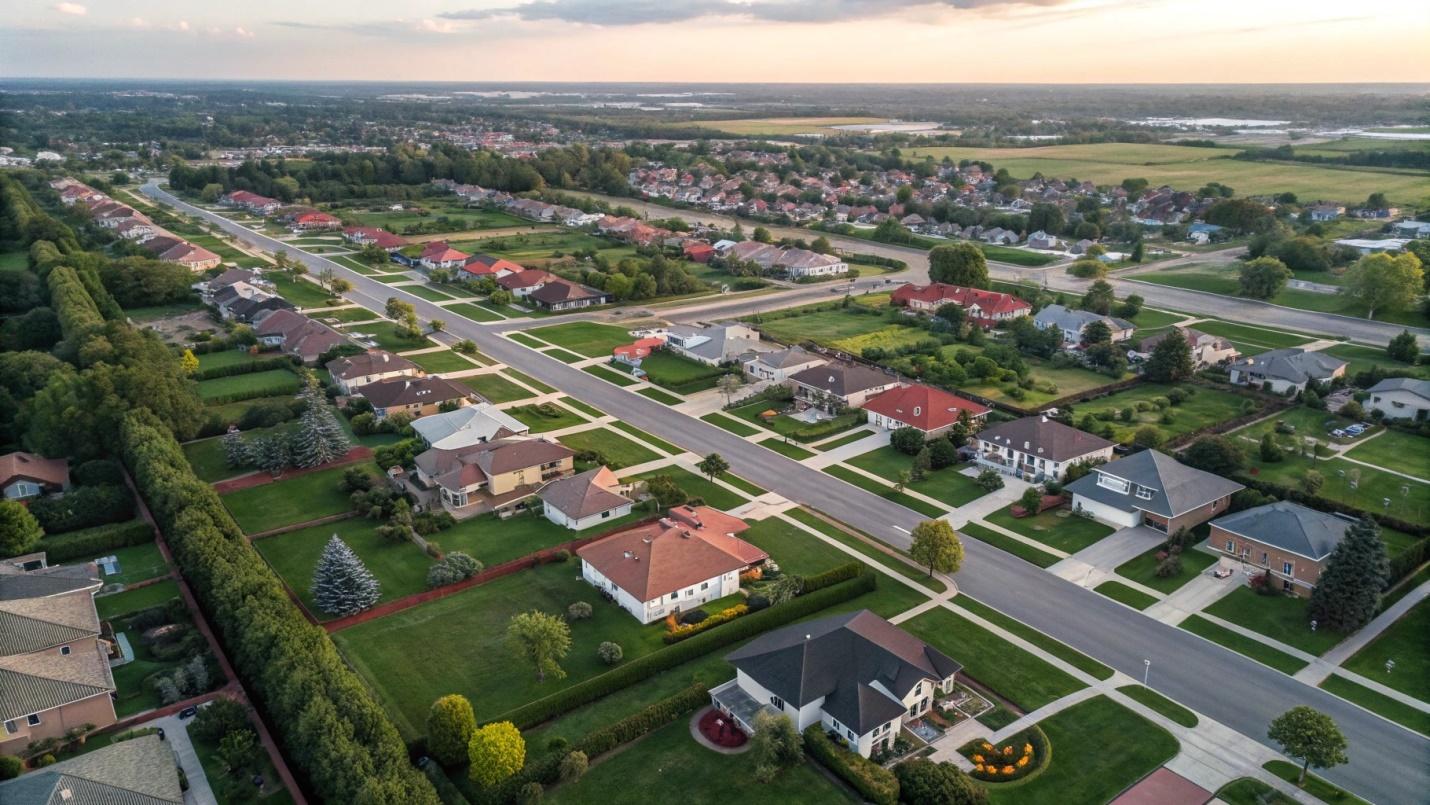The Death of the American Dream – Or the Birth of a Smarter One?
A Dream in Transition
For generations, the American Dream has been simple: work hard, buy a home, and build wealth as your house grows in value. This dream helped millions of Americans create financial security for their families.
But times are changing. Today, many people wonder if buying a home is still the best way to build wealth. Young adults especially are asking: “Is homeownership still worth it?”
“The traditional American Dream isn’t dead—it’s just being reimagined by a generation that values freedom and optionality over the burden of a 30-year mortgage,” says Gabriel Ostrovsky from 48Acquisitions, a prominent voice in the real estate industry.
This isn’t just about houses—it’s about how different generations think about success and financial security. The picket fence and two-car garage that symbolized success for our grandparents might not fit the lifestyle or financial goals of today’s young professionals.
As we navigate through changing economic landscapes, rising housing costs, and shifting work environments, we’re witnessing not the end of a dream, but its evolution. Let’s explore how the American Dream isn’t dying, but transforming into something new, perhaps even better suited for today’s realities.
The Affordability Crisis
In 1975, the average home cost about 3.3 times the average yearly income. Today, that number has jumped to 5.3 times yearly income. In simple terms: homes cost a lot more compared to what people earn.
This change didn’t happen overnight. Throughout the 1970s and 1980s, buying a home was within reach for many middle-class families. A single income could often support a mortgage payment. Fast forward to 2025, and the picture looks very different. In popular coastal cities like San Francisco, Seattle, or New York, the price-to-income ratio can exceed 10 or even 15 times the average income.
What does this mean for regular families? Many who could have easily bought homes in their 20s or 30s a generation ago now struggle to save enough for a down payment. Some work for years to save up, while others give up entirely.
The math is challenging, even with today’s flexible down payment options. Let’s say you want to buy a median-priced home of $400,000. While a traditional 20% down payment would be $80,000, first-time buyers have more accessible options. You could use an FHA loan with just 3.5% down ($14,000), or conventional loans requiring only 5-10% down ($20,000-$40,000), though these options may require Private Mortgage Insurance (PMI).
Even with these lower down payments, you’ll still need to cover closing costs (around $10,000) and have money for moving and furnishing. For someone earning $75,000 a year and living in an area with high rent, saving even the minimum amount can take several years. And remember, lower down payments mean higher monthly mortgage payments and additional costs like PMI.
Buying a home used to be something most Americans did when they grew up—like getting a driver’s license or their first job. Now, it feels more like a luxury that only some can afford. This shift has profound implications for how we think about success, financial planning, and what it means to “make it” in America.
The affordability crisis isn’t just about numbers on a spreadsheet—it’s changing cultural expectations and creating new dividing lines between generations. Older Americans who bought homes decades ago have often seen their wealth grow substantially, while younger generations wonder if they’ve missed the boat entirely.
Real Estate Cycles & What They Teach Us
The housing market follows patterns. About every 18 years, we see a cycle of rising prices, a peak, then a drop, before it starts again. Major peaks happened around 1989, 2007, and possibly soon again.
This 18-year cycle isn’t random. Economic researchers have observed it going back over 200 years in American history. The pattern typically includes:
- A recovery period (where prices gradually increase)
- A boom period (where prices rise rapidly)
- A bubble formation (where prices detach from fundamentals)
- A crash or correction (where prices fall, sometimes dramatically)
Understanding this pattern gives us valuable perspective. If you bought a home in 2005, you likely saw its value drop significantly during the 2008 financial crisis. If you bought in 2011, you probably experienced substantial appreciation in the following decade.
When homes become too expensive compared to incomes (like that 5.3 ratio we mentioned), it’s often a warning sign. History shows that when this ratio gets too high, the market usually corrects itself—meaning prices might fall.
Let’s look at some historical examples:
- Late 1980s: Housing prices peaked, followed by a downturn in the early 1990s
- 2006-2007: The housing bubble reached its maximum inflation before the crash of 2008
- 2021-2022: Housing prices soared post-pandemic, reaching new highs relative to income
After each peak, adjustments followed. Sometimes these were gentle corrections, other times dramatic crashes. The important lesson is that real estate isn’t a one-way ticket to wealth—it moves in cycles like any other market.
This doesn’t mean you should never buy a home. It just means timing matters, and understanding these cycles can help you make smarter choices. Buying at the bottom of a cycle might set you up for substantial equity growth, while buying at the peak could mean years of being “underwater” on your mortgage.
Is a Home Still a Good Investment?
“The best investment isn’t always the one your parents made—it’s the one that aligns with your unique life goals and financial timeline,” Gabe from 48Acquisitions emphasizes when discussing modern wealth-building strategies.
Buying a home today has pros and cons that deserve careful consideration:
Pros:
- You build equity (ownership) over time instead of paying rent
- You can customize your space however you want
- No landlord can raise your rent or ask you to move
- Mortgage payments remain stable (with fixed-rate loans) while rents typically increase over time
- Potential tax benefits from mortgage interest and property tax deductions
- Forced savings through principal payments on your mortgage
Cons:
- High upfront costs (down payment, closing costs)
- Maintenance expenses (typically 1-3% of home value annually)
- Less freedom to move for job opportunities
- Property taxes and insurance costs continue to rise
- Transaction costs when buying or selling (5-7% of home value)
- Opportunity cost of money tied up in your home instead of other investments
- Risk of market downturns affecting your largest asset
Let’s talk about returns. From 1972 to 2021, home prices grew by about 4.1% per year on average. The S&P 500 (a measure of the stock market) returned about 10.5% yearly in the same period.
But these numbers don’t tell the whole story. Real estate returns vary dramatically by location. A home in Austin, Texas purchased in 2012 might have doubled in value by 2022, while a similar home in parts of the Midwest might have barely kept pace with inflation.
Consider this detailed example: Sara buys a $300,000 home with a 20% down payment ($60,000). Her mortgage, taxes, insurance, and maintenance cost her $2,200 per month. After 30 years, assuming 4% annual appreciation, her home is worth about $972,000.
Meanwhile, her friend Tom rents a similar place for $1,800 per month. He invests the $60,000 he didn’t use for a down payment, plus the $400 monthly difference between Sara’s housing costs and his rent. He puts this money in a diversified portfolio earning an average of 8% annually. After 30 years, Tom’s investment account contains over $1.2 million—more than Sara’s home value.
Of course, Tom’s rent will likely increase over time, while Sara’s mortgage payment remains fixed. But when we factor in Sara’s ongoing maintenance costs, property taxes, and insurance (which all increase over time), the math often still favors Tom’s strategy in many markets.
This comparison changes depending on your local housing market, how long you stay in one place, current interest rates, and your individual tax situation. The key takeaway is that homeownership isn’t automatically the best financial move—it depends on many factors unique to your situation.
A Shift in Behavior: Staying or Straying
Americans are changing how they think about homes. In the 1960s, the average homeowner moved every 6.5 years. Today, they stay put for nearly 12 years. This nearly doubled tenure has profound effects on housing inventory and market dynamics.
Why are people staying in their homes longer? Several factors contribute:
- Rising transaction costs make moving expensive
- Limited inventory of affordable homes makes upsizing or downsizing difficult
- Remote work has reduced the need to relocate for jobs
- Aging homeowners prefer to remain in familiar communities
- Locked-in low mortgage rates discourage moves that would require new financing
Baby Boomers (born 1946-1964) are “aging in place”—staying in their homes well into retirement instead of downsizing. This keeps many homes off the market that might otherwise be available for younger buyers. In previous generations, elderly Americans often moved to retirement communities or smaller homes, freeing up larger family homes for the next generation.
Today, improved health, desire to maintain independence, and emotional attachment to long-time homes mean many older Americans occupy houses with multiple empty bedrooms. Some estimates suggest Baby Boomers control over 40% of all owner-occupied homes in America.
Meanwhile, Millennials (born 1981-1996) and Gen Z (born 1997-2012) have different priorities. Many value experiences over possessions, prefer urban living, and want the freedom to move for career opportunities. For them, renting isn’t just what you do until you can buy—it’s a lifestyle choice that matches their values.
The gig economy, remote work opportunities, and changing family formation patterns (marrying later, having fewer children) all contribute to different housing needs. A 30-year mortgage makes less sense if you expect to change careers or locations multiple times throughout your working life.
Some young professionals adopt a “digital nomad” lifestyle, working remotely while moving between different cities or countries. For them, the idea of being tied to a specific location through homeownership seems unnecessarily limiting.
Even those who do buy homes often approach ownership differently. They may purchase smaller properties, focus on locations with strong rental markets (so they can rent out their home if they need to move), or co-own properties with friends or family members to make ownership more affordable and flexible.
The Smarter Dream: What Replaces the Old One?
“The smartest wealth-builders of this generation understand that true financial freedom comes from owning income-producing assets, not just the roof over your head,” explains Gabriel Ostrovsky from 48Acquisitions.
The new American Dream focuses less on owning a specific thing and more on having choices. Financial freedom, not just homeownership, becomes the goal. This shift represents a fundamental change in how we think about success and security.
Some people now “rent by choice.” They’re not waiting until they can afford to buy—they’re choosing to rent because it gives them more flexibility. They invest the money they save into retirement accounts, stocks, or even starting businesses.
This approach offers several advantages:
- Geographic mobility to pursue career opportunities
- Less financial stress during economic downturns
- Diversified investments that don’t tie wealth to one local housing market
- More liquid assets that can be accessed in emergencies
- Freedom from maintenance responsibilities and unexpected housing costs
- Ability to live in neighborhoods they might not be able to afford to buy in
The FIRE movement (Financial Independence, Retire Early) exemplifies this new thinking. Its followers focus on high savings rates, low-cost index fund investing, and creating multiple income streams. Many specifically avoid putting too much money into a primary residence, seeing it as a consumption expense rather than an investment.
This shift is about owning assets (things that make you money) instead of liabilities (things that cost you money). A home can be both, but many young people prefer diversifying their investments rather than putting everything into one property.
New investment vehicles make this easier than ever. Low-cost index funds allow anyone to own small pieces of hundreds or thousands of companies. Real estate investment trusts (REITs) let you invest in real estate without the headaches of being a landlord. Crowdfunding platforms enable investment in startups with minimal capital.
Technology has also changed how we think about ownership. The sharing economy (Uber, Airbnb, etc.) has demonstrated that you can access what you need without necessarily owning it. This mindset has extended to housing, with co-living spaces and flexible rental arrangements becoming more popular.
Even those who do want to own homes sometimes take unconventional approaches. House hacking (buying a multi-unit property, living in one unit while renting out the others) allows some to live for free while building equity. Others purchase vacation properties that generate rental income when they’re not using them.
American Dream is Not Dead—Just Different
The American Dream isn’t gone—it’s evolving. Though homes are less affordable now, there’s hope in this change as young Americans find new paths to financial security.
“The most powerful wealth-building strategy isn’t following the crowd—it’s having the courage to chart your own financial path based on today’s realities, not yesterday’s playbook,” Gabriel Ostrovsky from 48Acquisitions reminds us.
Each generation discovers new opportunities through technology, remote work, accessible investing tools, alternative housing, and changing social norms.
The future remains bright for those who adapt. Whether through homeownership or other investments, financial security is still achievable—it just looks different than before.
The future is bright for those who adapt. Maybe you’ll own a home someday, or maybe you’ll build wealth through other investments. Either way, the dream of financial security and happiness remains very much alive in America—it just might look different than it did for your parents or grandparents.
Hope lies in options, with the new American Dream offering diverse paths to success. It gives you freedom of choice while recognizing everyone’s journey is unique. Hope comes from flexibility, as today’s Americans create personalized timelines instead of following the rigid script of previous generations. There’s also hope in community through new models of shared ownership and in knowledge from increased financial literacy.
Whether you buy a home or take another path, you define your American Dream. At its core, the Dream has always been about freedom to pursue happiness your way, not checking off a list of possessions. This dream remains alive—perhaps more authentic than ever before.
Hope isn’t found in blindly following traditions, but in the courage to create new ones. The death of the old American Dream isn’t a tragedy—it’s an invitation to build something better, more inclusive, and more aligned with what truly matters in life to you.











Post Comment